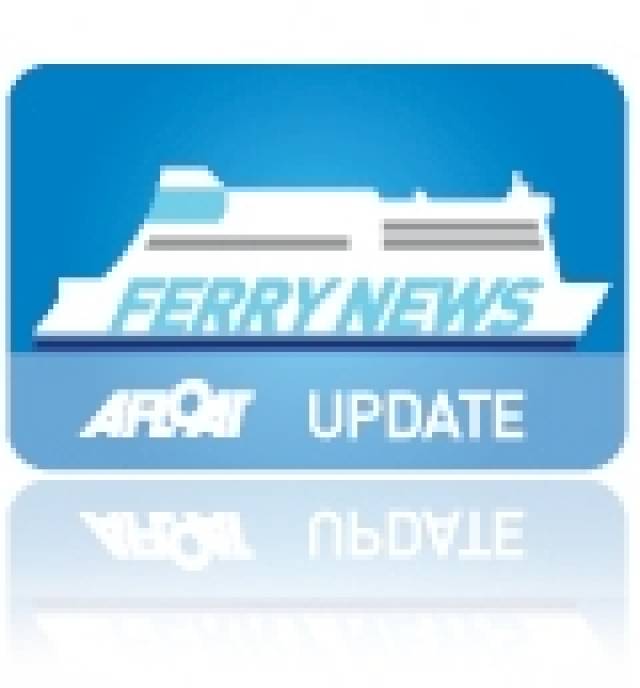#FerrytoCruisePlans – With increasingly mixed reaction on Dun Laoghaire Harbour's plans for a proposed new €18m cruise berth facility, what will happen to the existing albeit redundant Stena HSS fast-ferry linkspan berth, writes Jehan Ashmore.
Afloat.ie has inquired with Stena Line to confirm the status of the unique ro-ro port infrastructure on St. Michaels Wharf. The ro-ro linkspan berth was exclusively designed to serve the High Speed Seaservice (HSS) car-carrying and freight craft catamaran, Stena Explorer. She made her debut on the Dun Laoghaire-Holyhead route in April 1996.
It is now almost seven months ago since the route to Holyhead closed with the final sailing departing Dun Laoghaire Harbour on 9 September. Stena say as part of their agreement with Dun Laoghaire Harbour Company, they will have to remove the linkspan and that they are making plans to do so with the assistance of Stena Metall and Stena Teknik.
The end of the Ireland-Wales route, came as no surprise as there was widespread speculation in recent years over the service's ability to be viable. It was in February when Stena announced the permanent closure of the route and that there would be no service in 2015.
This led to Stena pulling out of Dun Laoghaire Harbour and concentrate instead out of neighbouring Dublin Port on the existing route to Holyhead and launch of Stena Superfast X alongside Stena Adventurer.
When the HSS Stena Explorer entered service almost two decades ago, the Dun Laoghaire linkspan was custom built for the fast-ferry. Incidently, she was the first HSS launched and would become the last of the trio of HSS 1500 series to remain serving Stena Line.
When berthing at the linkspan, the HSS Stena Explorer did not require mooring ropes alongside St. Michaels Wharf, but instead satellite technology guided the 19,638 tonnes fast-ferry to the linkspan. Shore-based arms would clamp at the craft-stern upon arrival and released for the departing sailing on the 52-nautical mile crossing to Anglesey.
An Irish Sea serving sister, HSS Stena Voyager which served Belfast-Stranrear (since closed) had on occasions appeared on the central corridor route to cover for 'Explorer's dry-docking. As for the third sister, HSS Stena Discovery, she served on the southern North Sea on the Harwich-Hook van Holland route.
Currently, a public consultation process on the Dun Laoghaire Harbour Company's cruise-berth proposal is underway with an expiry date for submissions / observations next Monday 13 April (for further details click HERE).
The consultation is in advance of an expected planning application by DLHC on behalf of the Dun Laoghaire Cruise Stakeholder Group to An Board Pleanala.
If the plan goes ahead the cruise facility would incorporate use of the former Stena ferry terminal on St. Michaels Wharf which was built in the 60's and originally featured a pair of ro-ro ferry berths.
The former Stena terminal as previously reported would also be transformed as the ferry vehicle marshalling area would be turned into coach, taxi and mini-bus parking use.
In addition the project would involve constructing a new boardwalk overlooking the adjoining 820-boat marina.































































